
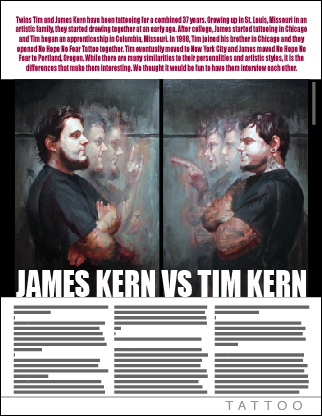
Tim: I think I will go first. What is the tattoo scene like in Portland, Oregon?
James: Portland has a great tattoo scene. It’s common to see people with full sleeves of nice work while out and about. There are lots of good artists here and the general population is very artistic and informed about tattoos. That creates a high demand for quality work.
Tim: You’ve recently added several artists to No Hope No Fear. Who are they, and what is it like working with a group after working with just one other person for so long?
James: It’s really nice working with the group we have—Rachel Gilbert has worked with me for over 6 years now, Josh Hibbard joined our shop about a year ago, and Bacon has been with us for just a few months but we’re all like a big family. We get along really well, we hang out outside of work too. We get together pretty regularly to work on painting or hang out.
Tim: How would you describe your current work?
James: My work has been evolving. I’m not sure the direction it’s going but it’s getting more and more complex. I have been doing a lot of space/galaxy tattoos as well as art reproductions. I have been trying to do fantastic and psychedelic images mixed with realism. I like to keep a lot of variety in the work I do. That keeps things interesting. I have been trying to do more paintings and would like to start doing tattoos based on some of those. I’m starting a backpiece at the end of the month and I will be doing a painting in preparation.
Tim: Most of your tattoo work has a tremendous amount of small detail work. How do you approach designs of such complexity? What is the average amount of hours that it takes for you to do a sleeve for example?
James: Every piece has different challenges. The highly detailed pieces definitely take more time. It takes using smaller needles and more concentrated effort and focus. If you are working in a small area every millimeter counts—there’s much less room for mistakes. I work pretty efficiently, so it doesn’t take a super-long amount of time. If I am doing a black and gray piece it takes half the time of a color piece.
Reproductions take longer than pieces I design because there’s so much back and forth checking the reference to make sure what you’re doing is accurate.
Tim: How has technology affected your design process? I understand you do a lot of design work on an iPad…
Tim: You’ve been painting a lot recently as well. Do you find painting affects your approach to tattooing, or vice-versa? What style of paintings do you enjoy doing the most?
James: I’ve been exploring a few different styles of painting. I have done a few portraits as well as some free-style stream of consciousness paintings. Sometimes I start a painting by just smearing around paint on the canvas until I see something in the paint. Then I develop what I see.
Tim: What artists (tattoo or otherwise) do you find the most inspiring or influential?
James: There are too many! Tattooing is going into another renaissance. People are really pushing the boundaries of what can be done in skin. There are many tattoo artists that I admire: Boris, Dmitriy Samohin, Robert Hernandez, Phil Garcia, Xoil, Volko and Simone… There are more artists every day that blow my mind; I’m trying to keep up. As far as painters go, Chris Mars, Kris Kuksi, Shawn Barber, Jed Leiknes, Dan Quintana, Carlos Torres, Chet Zar, Alex and Allyson Grey, Craola…. so many.
Tim: What do you like about doing tattoo conventions? What conventions do you plan to attend in 2014?
James: I don’t really enjoy working at conventions. The conditions are not ideal; bad lighting, bad chairs. What I enjoy is getting to see and sometimes hang out with the artists and collectors that I admire. There are so many awesome people in the industry and I love seeing them. I am doing a little less travel this year, but I will be at the Evergreen Tattoo Invitational, both Hell City conventions, Edmonton, and I believe the Stockholm Inkbash.
Tim: I didn’t know you were going to Stockholm! Such a fun convention! I will see you there! You do a seminar called “Tattooing The Impossible.” Can you describe what the seminar is about?
James: The seminar is about non-traditional approaches to modern tattooing—thinking outside of the black outline. It talks about how to approach tattooing images that are complex and beyond the scope of traditional tattoos, like the imagery of Alex Grey or outer space tattoos, etc.
Tim: You’ve been using rotaries for a few years now, what are the differences or advantages from using coils for you?
James: For me, what I like the most about rotaries is the efficiency of how they run. I like the consistency in speed and pressure, that allows me to use my hand to control the pattern of strikes in the skin. It takes machine tuning out of the picture. I never liked how coil machines change speed when the needles are in the skin. The lack of noise is a huge plus as well.
Tim: What do you like to do when you aren’t tattooing or painting?

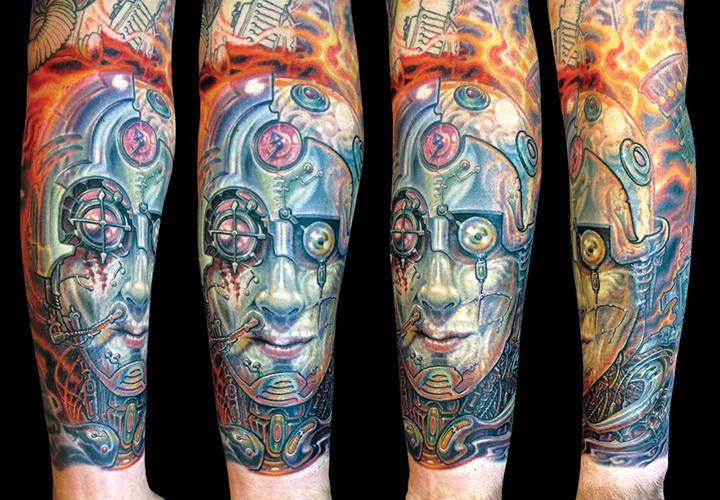
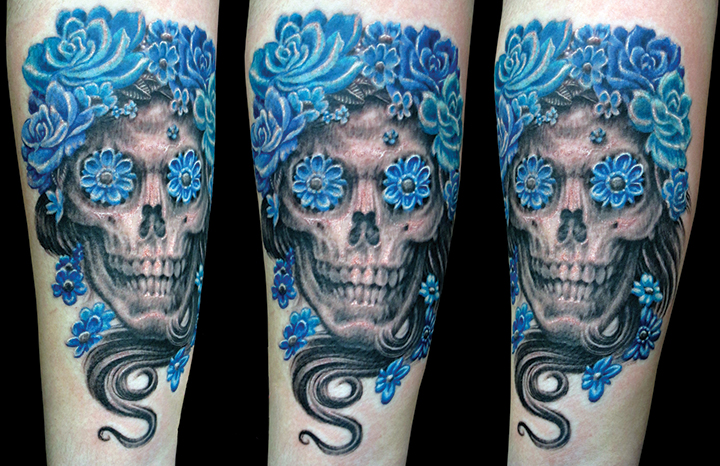

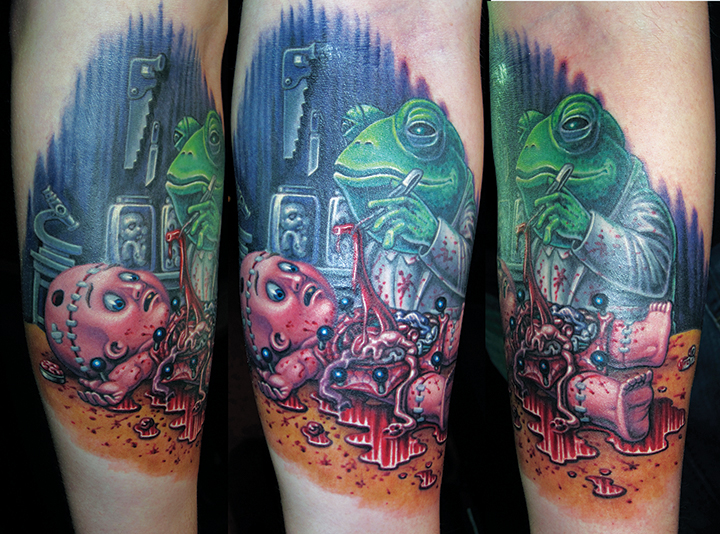
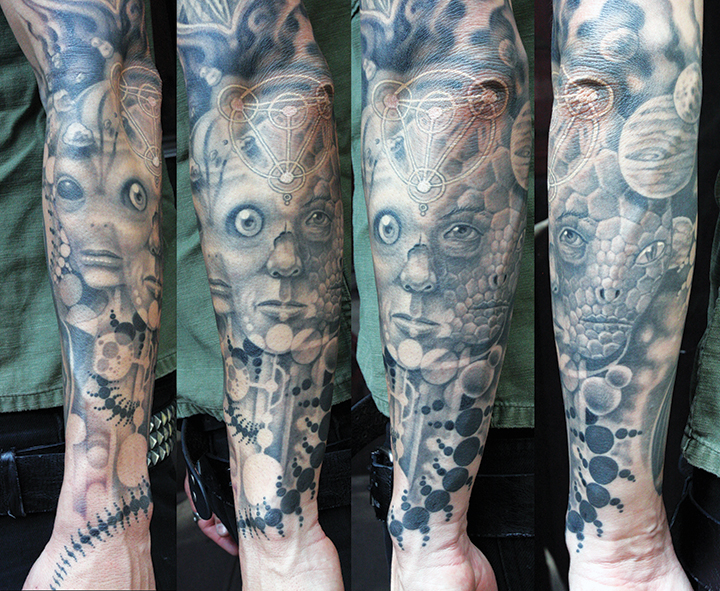
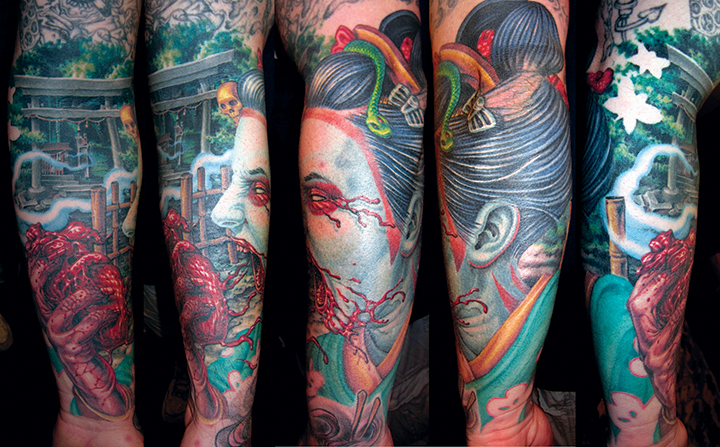
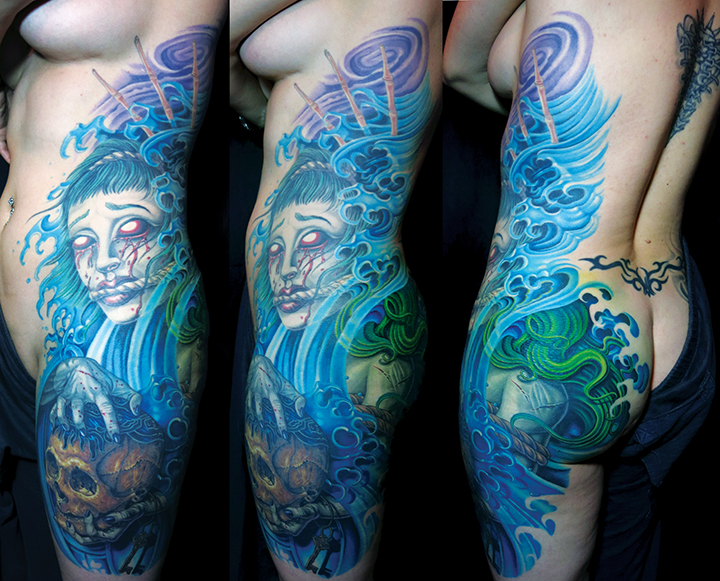
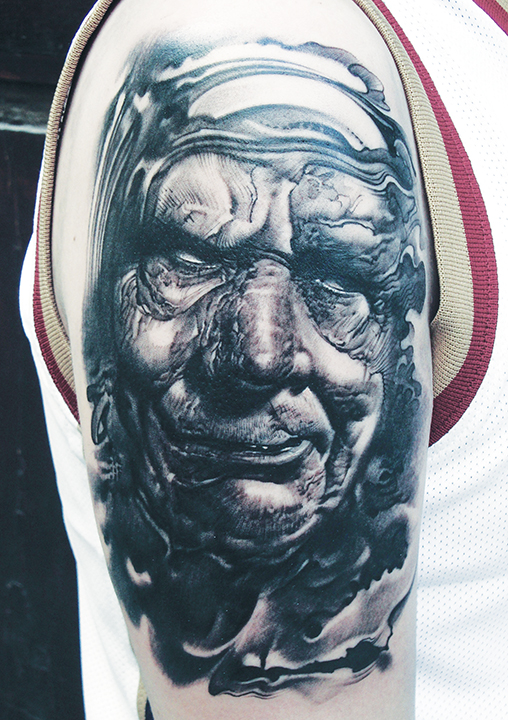
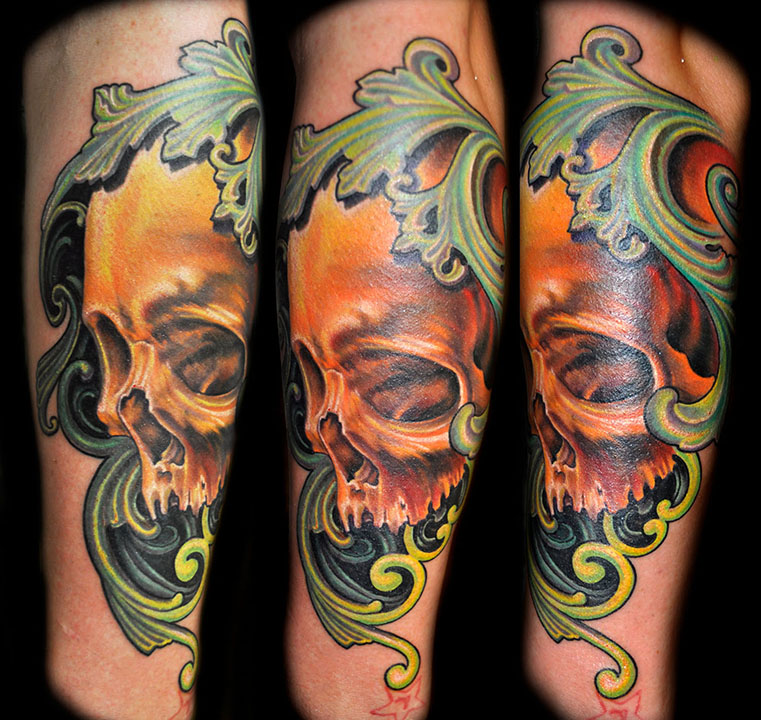

Leave a Comment